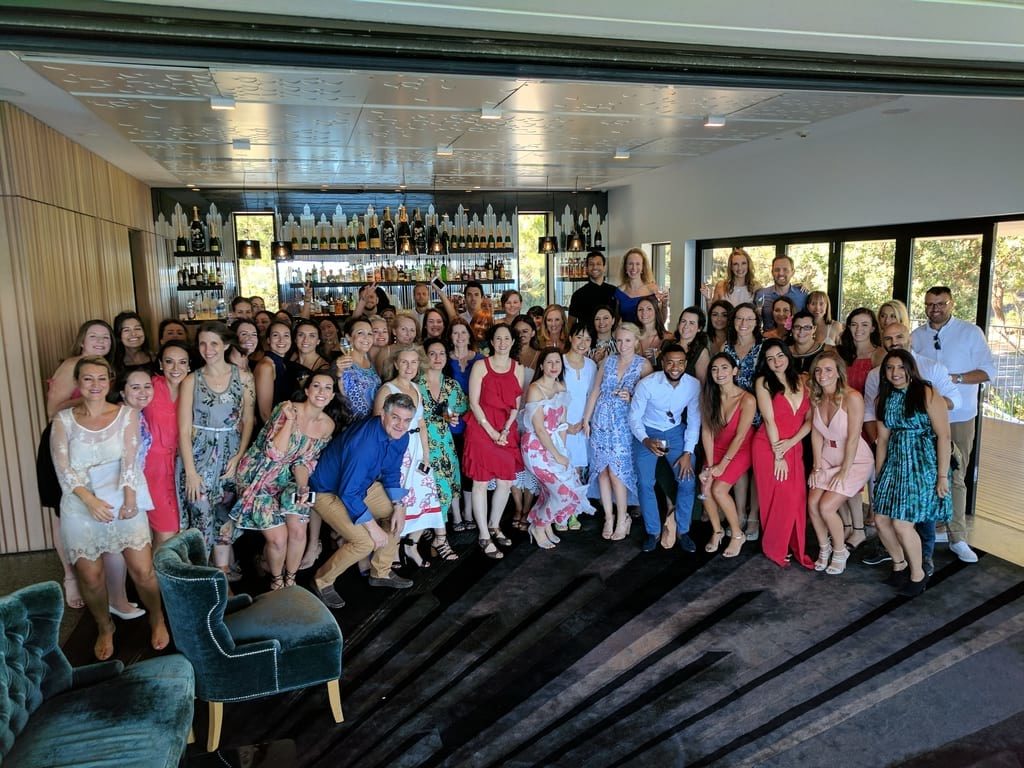To create a great place to work, you need intention and commitment

Wavelength, Australia’s largest medical recruitment agency, is in the Top 20 of the Best Places to Work under 100 employees for 2017, and I’m absolutely wrapt.
It always feels fabulous to find out that a business we’re partnering with is being recognised for the effort and investment they’ve made in their people – I am a big believer in keeping your team engaged and happy while they’re on the journey to success. And just to prove they’re genuinely committed to this, it isn’t even Wavelength’s first time on the Best Places to Work list, but the seventh!
In response to The Great Places to Work nomination, Wavelength’s CEO, Chris Riley shared his thoughts:
“The workplace culture at Wavelength is extremely unique and we’re thrilled to be recognised in this way by such a well-respected independent study,” he said. “We’re proud to be able to maintain the balance between a high performing sales and service culture, while at the same time working collaboratively as a team to make a real difference to the wider community. We continue to thrive both personally and as an organisation by embracing a generous and supportive workplace culture.”
GM People & Culture Emma Trehy agrees, explaining that Wavelength’s hiring process is focused on long-term employee engagement by setting each new employee (affectionately known as a “Wavie”) up for success.
“Employee retention is at the heart of our business model and the effort we put into finding the right people is reflected around the office,” She said. “We’re a very diverse group of individuals and yet we all have a similar essence; each team has its own personality; yet we all get together as a group. We’re a truly cohesive and genuinely passionate organisation.”
Wavelength’s passion and commitment to their people is evident in their partnership with Redii.com, who launched their employee recognition and reward program, “Thank Bank”, on the Redii.com platform in October 2016.
From the very beginning, Wavelength was committed to the people-led process – their people (affectionately known as “Wavies”) came up with the name, and their Culture Club was actively involved in generating ideas for the program awards and badges.
In just the first ten months of their program launching, Wavelength have set some pretty high benchmarks:
99% of Wavies have logged into the Thank Bank recognition program
94% of Wavies have received recognition
85% of Wavies have sent recognition
The company has generated over 750 moments of recognition
There have been over 1500 interactions on the Thank Bank Recognition Wall
In the last financial year, staff turnover decreased by 5%, which is no small achievement for a company in an industry renowned for its high-pressure work environment and high staff turnover. A quarter of Wavies have been with the company for 5-10 years, and over a third have been there for 5 or more years.
Partnering with Redii allows Wavelength to reinforce the benefits of their other cultural initiatives; people can be recognised (and rewarded) when they reach their individual goals and company goals, and for living out the Wavelength values of excellence, ingenuity, integrity and heart. They use the platform to celebrate (something I think is very important!), and build on the already strong social network amongst their diverse and driven teams.
When you consider all these efforts, it doesn’t surprise me that 92% of Wavies said “Taking everything into account, this is a great place to work.” Their achievement with Best Places to Work is no small feat, and proves just how much can be achieved with and through people, even if a business is going through significant change.
How great is it that 90% of their people feel they make a difference, that 94% are proud to tell others they work there, and 95% believe they’re treated as full members of the company, regardless of their position. These are fantastic responses from Wavelength’s team, and I am so pleased that Redii is able to support them in their success.
If you are an employer keen to learn how to engage your people, and transform the culture in your business from “ok” to “award-winning”, watch the next video and discover how easy is to become a people first organisation.




